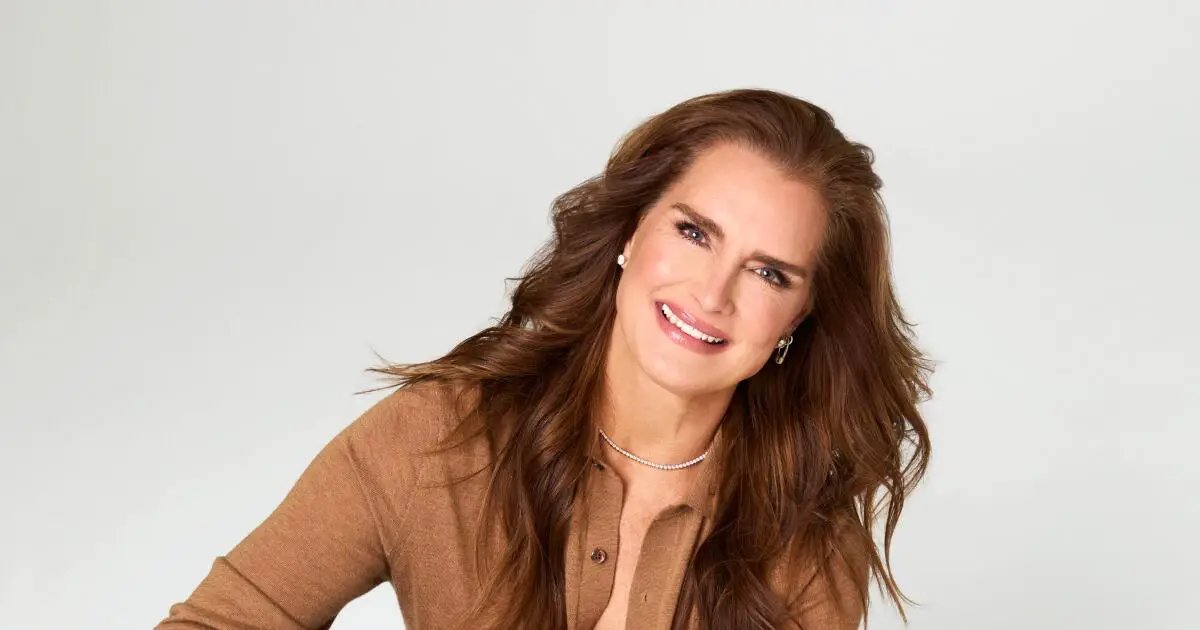“I’m a messy eater,” admits Isaiah Lat, a 20-year-old student, DJ and stylist from Chicago, “I used to wipe away stains but now I don’t mind a little oil or a little spaghetti on my shorts. I think it’s chic.”
He does not believe that a term has yet been coined for the way he likes to dress. “It’s probably this dystopian, Mad Max, pirate, Steam Punk, mythological vibe,” he says, big on thrift and DIY; he likes skinny jeans, Capri pants and visor-like sunglasses. He doesn’t pile on the pasta sauce before he leaves the house but says he does like his clothes to be “somewhat stained”.
There’s a new mood in fashion: aesthetically varied, but its disparate elements – camouflage, combat shorts and grungey plaid; goth-inspired make-up and stomper boots; silhouettes and garments inspired by 2010s indie sleaze; T-shirts emblazoned with slogans inspired by nihilistic internet humour – project a common mood. Daniel Rodgers, digital fashion writer at British Vogue, says that much of it stems from the rebellious energy of kids “born in 2000 trying to reclaim the things millennials wrote off as loserish”. It is often a bit grotty, a bit greasy and crumpled and raw.
It’s a big leap away from the homogeneous looks that have dominated visual culture for a decade, including sleek, mass-produced athleisure and the ubiquitous “clean girl” trend, which problematically centres influencers who either are – or look like – Hailey Bieber, with white, gently blushing skin and huge fluffy eyebrows.
“Young people’s style has changed pretty substantially in the past four years,” says Sean Monahan, the trend forecaster who predicted all this in his 2021 article warning of an incoming “vibe shift”. Monahan has particularly noticed “a huge move away from streetwear”, for which he blames the “crypto bros” and “hype dads” who spend too much money on limited edition branded garb. He said he heard the death knell in a shopping mall in 2019, when he saw a dad wearing head-to-toe streetwear-inspired Balenciaga, sitting next to his mortified-looking teenage son. “I thought: this isn’t going to last as a youth movement!”
Lat, the 20-year-old with stained pants, says he gets fashion inspiration from people he sees at raves, many of whom, he has noticed, have started to dress in a way that might feel “uncouth and inappropriate” to outsiders. He thinks the look goes hand in hand with the scene of “synth, techno” music by artists including Charli XCX, Snow Strippers (a band whose grimy aesthetic could be straight from the 2012 Harmony Korine movie Spring Breakers), Shygirl and AG Cook. It is an intentional rejection of the mainstream. “We are sick of late-stage capitalist fashion,” he says. “In the aftermath of Trump’s presidency, with the conservative supreme court and our rights being stripped away, we want to dance and look hot – and this is our way of showing the government and corporations that we don’t need them.”
Agus Panzoni, trends spokesperson for Depop, says that we are in the midst of “a rise of referential fashion”, where “specific references which can be brought into personal style depending on your own sensibilities”.
This approach to getting dressed inspired Charli XCX’s viral hit 360, (“I’m your favourite reference, baby,” go the lyrics.) In the song’s video Charli gathers a coterie of so-called “hot internet girls” to jokingly – yet accurately – codify what it means to be an internet trendsetter now. All of them wear quirky, unique looks, from Gabbriette Bechtel’s goth-white foundation to Julia Fox’s talon-like nails.
Even their eyebrows are rebellious, at least compared to the decades-long trend for huge, HD brows: Bechtel’s are pencil-thin; at least three of the others have theirs bleached to invisibility.
The video’s aesthetic taps into a return to “street style”, says Monahan, that does not feel “brand or product led”. That’s something Johnny Cirillo, one of New York City’s best known street style photographers, has noticed too; he has never seen such a variety of looks on the street as in the past year. “There is so much going on; so much goth. A lot of face jewellery – big huge metal pieces, almost Mad Max. More robotic stuff – like metal sleeves. You can tell that people’s ideas are constantly changing, that they are up at night scrolling and shopping on eBay, Grailed and Depop.”
Panzoni is also notices a rise in what she calls “IRL-ness” in fashion: young people veering towards, say, faux fur coats, after the decades-long dominance of puffer jackets, shredded wool sweaters and the bright hues typically associated with online shopping.
One of the key proponents of this look is Julia Fox, who is well-known for going viral for her wild, imaginative and often barely-there clothes (“I’m so Julia,” sings Charli XCX in 360; Lat tells me she is: “our fashion messiah!”) Fox’s stylist and friend Briana Andalore grew up thrifting clothes and hanging out with drag queens in downtown Manhattan, and wears those influences proudly. Even now that she has access to all of the designer brands, Andalore tells me that she still makes outfits from items other people have discarded as trash when the mood strikes her. In OMG Fashion, the TV show she is currently working on with Fox, she says: “We show how to make garments out of shower curtains. You don’t need to have a lot of money. That’s always been part of the fantasy.”
Youth rebellion through DIY fashion is not a new idea, of course: the punks were at it in the 1970s. To a certain extent millennials did the same thing themselves, points out Monahan, who sees a “cultural rhyming” in the way many millennials, who grew up in the peak twee marketing era of Abercrombie and Fitch, discovered vintage clothing and an indie aesthetic when they went away to college.
Still, there is something particularly nihilistic about what is happening now, says Rodgers. The way people are “dipping into looks from the past 15 years of mainstream culture and putting them all together in a wild bonfire heap” and sampling from subcultures without the “lifestyle obligations” that used to be part of wearing those clothes. He says that when micro-trends come into style at the moment, they stay in: “So everything is trending at once. Everything is porous and blurred; it’s kind of a free for all.”
Panzoni says that many young people are buying into ideas about “creating yourself without caring about the rules; an idea that as long as you are being yourself, you will look hot”.
A very specific, internet-based humour is also a big part of the new mood. Sabina Meschke’s wardrobe is a case in point. The 27-year old comedian and coffee shop worker who lives in Bed Stuy, says she is referring to her own childhood in Florida when she gets dressed. Her most cherished pieces include “a baby doll dress with huge puff sleeves and little bows all over it in hunting camo” by independent Florida-based designer, Taylor Dorry, and a shirt that combines the slogan “Hooked on Jesus” with ruffled sleeves printed with pictures of clowns.
She loves slogans; she likes to wear a hat saying “I don’t work here”, when she is at work.
Angela Qian, a 22-year-old who has just graduated from Berkeley in economics, shares photos of her outfits online. She says her look is rooted in the “post-ironic” online communities. (Post-irony, she says, “is hard to explain but a lot of it comes down to surrealism, and things that don’t really make sense”.) She associates strongly with cult brands like Haunted Starbucks, which seem precision-designed to baffle those who are not chronically online. Sample garments include a backless hoodie with a picture of Oprah printed on it beside the text: CUM and sneakers decorated with a picture of SpongeBob SquarePants next to the phrase “Live Laugh Love”.
Post-irony comes up a lot among the designers of cult brands targeted towards young people raised on memes. The brand Uncle Inc, for example, makes a pair of bright pink, Juicy Couture-inspired hot pants with the word Rancid written across the butt in a horror movie-style blood dripping font. The idea, says co-founder Alex Holmes, was to juxtapose the aesthetic of a “hot girl” with an admission that “I’m also gross.” Other hits include shirts emblazoned with phrases like “Ketamine Tuesday” and, in a collaboration with the actor Rachel Sennott, “So Exhausted From Carrying Around My Big Heaving Tits All Day”.
Thankfully, such slogans seem unlikely to be adopted by the hype dads any time soon – though some elements of this style are already showing signs of percolating into the mainstream. Even Hailey Bieber, the ultimate icon for the “clean girl” look, is dressing a bit more chaotically, points out Rodgers, and is “in some way mirroring what’s happening on the street. She’ll wear a football shirt with some tailored trousers and cowboy boots or a poet sleeved shirt with Fila shorts and a Mary Jane, like someone’s kind of sifted through a lost property box on sports day.”
For now, though, says Rodgers, the look has “yet to crystallise into a marketable aesthetic” and, at its bleeding edge, with its stains and its sometimes outrageous humour, its DIY nature and its wild variety, it is tribal, understood and worn by those in the know. It may resist adoption for a while, argues Monahan, because it is a very “youth optimised strategy” for dressing. There is nothing forgiving, or flattering, about chaotic, unstructured outfits. He puts it simply: not everyone can wear ugly fashion. It’s a look “you can really only pull it off if you’re very attractive. It’s a bit ironic, but it’s also a bit of a flex to be able to pull off some of the looks that I see”.
The outfits might look strange, even “ugly” to the rest of us. Or perhaps, as a reaction to a decade of Facetuned influencers, ultra-fast fashion, digitised social lives and wildly commercialised, screen-led homogeneity, this new youth mood – which is not led by brands, which centres inventiveness and secondhand clothes – is rather beautiful.
Johnny Cirillo’s Watching New York: Street Style A to Z is out now






